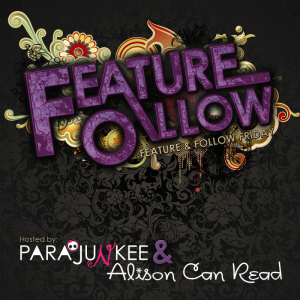Author Interview: George Graybill
Tell us a little bit about yourself. Where are you from?
I was raised on a chicken farm in a remote Pennsylvania village. After abandoning the chickens, I worked as a professional student, oceanographer, bum, woodworker, research chemist, chemistry teacher, and science writer in that order. I have also written for national magazines, including backpacking and woodworking magazines. I've written some fiction, but I didn't like the results. I occasionally write poetry of Valentine's Day.
How long have you been writing?
I've always liked to write. I started writing more when I started backpacking. Campfires attract muses.
What was the inspiration for your most recent book?
When I realized that science concepts were discovered in almost the same sequence they are taught.
 What was the hardest part about writing this book?
What was the hardest part about writing this book?
Writing it was easy and fun. The hard part came when discovered that promoting it is hard and frustrating.
Do you often develop characters from your personal experiences or draw from that of others?
Most characters in this book are historical figures. I did develop a few from my personal experiences.
Science writing and consulting is what I do for cash. When I get a break, I go backpacking.
What is your next writing project?
This book was about the nature of matter. I suppose the logical sequel is "Life."
From Archimedes’ bathtub to Schrödinger’s cat, the reader follows the dramatic and humorous events in the history of the ongoing struggle to understand the basic nature of matter and, in the process, painlessly absorbs all the major concepts of middle school physical science. The structure of the book takes advantage of the fact that basic concepts about the nature of matter were discovered in roughly the same sequence they are taught. The book begins with the ancient Greeks, who first talked about atoms from a viewpoint that was more philosophical than scientific. The story of the next 2,000 years highlights the events and characters in the history of the study of matter. The book ends on the note that all the knowledge we have gained has led us back to asking philosophical questions such as, “Why does matter exist?” The tone is one of whimsy, weirdness, and irreverence. Although historical events are embellished or even completely fabricated for comic effect, it is always clear that the science is accurate. Adult readers will find this book thoroughly entertaining, but it can also serve as a supplement to a middle school physical science class. It should appeal to students who can’t get enough of science and to those looking for something less boring than their textbook.
I was raised on a chicken farm in a remote Pennsylvania village. After abandoning the chickens, I worked as a professional student, oceanographer, bum, woodworker, research chemist, chemistry teacher, and science writer in that order. I have also written for national magazines, including backpacking and woodworking magazines. I've written some fiction, but I didn't like the results. I occasionally write poetry of Valentine's Day.
How long have you been writing?
I've always liked to write. I started writing more when I started backpacking. Campfires attract muses.
What was the inspiration for your most recent book?
When I realized that science concepts were discovered in almost the same sequence they are taught.
 What was the hardest part about writing this book?
What was the hardest part about writing this book?Writing it was easy and fun. The hard part came when discovered that promoting it is hard and frustrating.
Do you often develop characters from your personal experiences or draw from that of others?
Most characters in this book are historical figures. I did develop a few from my personal experiences.
Are your comfortable writing in different genres? What is your go-to genre?
Science-humor (if that is a genre)
Science-humor (if that is a genre)
Is writing your first job?
Science writing and consulting is what I do for cash. When I get a break, I go backpacking.
What’s something that you do to help find new inspiration?
The closest I get to writer's block is stewing over how to put a tangle of elements in a coherent, logical order.
The closest I get to writer's block is stewing over how to put a tangle of elements in a coherent, logical order.
What is your next writing project?
This book was about the nature of matter. I suppose the logical sequel is "Life."
Now for one of my favorite requests - tell us a random fun fact about yourself.
I sat zen meditation with Jerry Brown and Steve Jobs.
I sat zen meditation with Jerry Brown and Steve Jobs.





Comments
Post a Comment